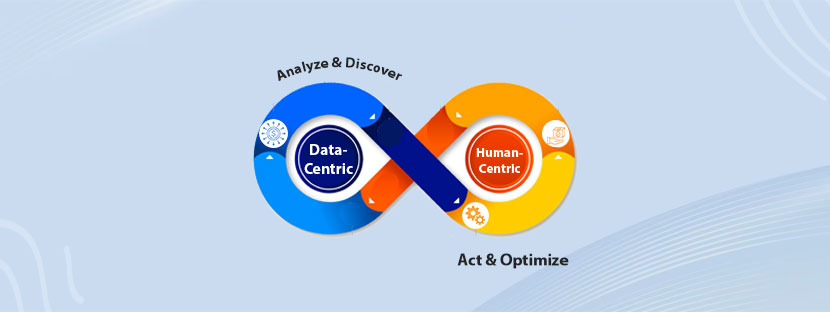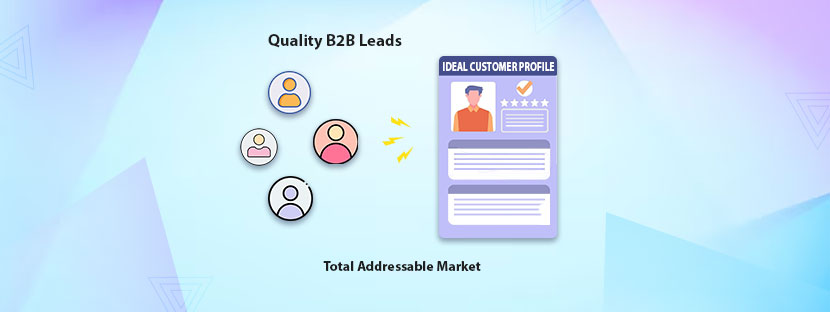Getting ahead in marketing needs constant churning of data. Analyzing them and getting insights from them is the best way to stay relevant in the current competitive era.
Guesswork does not work in marketing anymore. Earlier, it worked because marketers did not have a lot of resources to get accurate data about the market. They used to guess the data, and that worked for them for a long time. Probably because they thought about the people whom they serve, they focus on the human-centric approach.
On the other hand, nowadays, every single aspect of marketing is trackable through proper data. Companies are now focusing more on data-centricity to get accurate versions of data for performing the marketing part.
Anyway, both human-centric and data-centric approaches of marketing are great in their respective field. And, when you combine both, you can unlock a sharp jump in marketing growth. Let’s understand how with this blog.
What does data-centric marketing mean?
At present, every successful marketing organization has incorporated a data-centric culture. Having a data-centric culture enables them to make well-informed decisions. That ultimately helps them gain a competitive edge over their close competitors.
Data-based decisions have always helped companies earn 20% extra revenue while cutting costs. It helps companies understand their customers better and provides extended support for continuous improvement. It plays a critical role in the success of modern marketing. Having a data-centric culture is a must for modern organizations to thrive in the competitive market.
Building data culture in modern organizations is necessary, but sometimes it faces hardships due to many factors such as;
- A lack of clear direction on what to enforce and what not to, while doing the digital transformation. It leaves doubt in people’s minds and makes them unsure about the changes in the organizational culture.
- Overlooking the basics is also a negative tendency that erodes the enthusiasm for having a data-centric marketing operation.
- Overburdening people with tools can make them super-confused and overwhelmed if you keep the deadline to adopt data culture short.
Starting from the basics is the first thing; later on, you can integrate more data-driven measures. Even mature data companies have started adopting a data-based culture in their initial stage. They become completely data-mature much later.
Keeping data at the centre of marketing operations is a great move. It helps move faster and speeds up the marketing process. Plus, it builds a data-first mindset at every stage of marketing operations.
What does human-centric marketing mean?
At the juncture of AI development, marketing is now getting switched towards human-centric approaches. This concept puts humans at the centre stage of the marketing campaign. Marketing focuses on understanding the human perspective, language, values, and beliefs, as well as human challenges.
Following human-centric marketing strategies helps companies start a conversation directly with the customers. The landscape of Industry 5.0 reveals the truth of human-centric marketing. Hyper-personalization emerges as a matter of trend in marketing as a sure-shot approach to acquire customers.
For example, sending personalized emails is gaining more responses than other marketing tactics. It’s a core human-centric approach that companies are taking to establish personal connections with prospects.
Companies that adopted human-centric marketing approaches from their initial stages have shown positive results. They interacted with customers better and achieved customer satisfaction in a better way.
Interestingly, there are a few key areas where you need to focus on if you’re adopting human-centric marketing approaches-
Sustainable Marketing: Today’s customers are now more conscious about sustainability. They care about the environment, and they prefer environmentally conscious companies. This move must reflect on their marketing strategy to gain maximum attention. It helps brands to connect with the targeted people on a deeper level.
Resilience & Agility: The modern market is constantly reshaping its paradigms. Every modern industry is going through a large change because of the recent development in the AI field. Hence, businesses have to stay resilient throughout to survive the market. Adopting a human-centric approach helps businesses to stay agile during a volatile marketing phase.
Marketing in 2026: a combination of data-centricity & human-centrality
Handling the marketing operations at present requires error-free data along with human-centric approaches. A mixture of both these factors can bring resilience into your marketing strategy. While data guides marketers about the performances, human-centricity will help brands connect with prospects at a deeper emotional level.
Therefore, it requires a combination of both (data-centric and human-centric) to perform better in marketing.
Have a strategic framework
Your marketing campaigns can bring success if you focus on collecting and storing quality data. If you focus on developing a data-centric marketing approach, you need to have all marketing data. Companies that rely on marketing data are always engaged in various activities like surveying, gauging public opinions, collecting demographic data, and other work.
After collecting all the data, they perform an analysis to find scopes and opportunities. It helps them come up with new ideas and references for their marketing initiatives. Apart from that, it helps companies constantly track people’s sentiment and analyze how their opinions are changing over time.
The insights that data-driven marketing techniques have collected can be utilized in a human-centric approach as well. Data also reveals the emotional states of your targeted prospects. Human interaction with data is a key essential factor for the success of marketing campaigns in today’s date. So when you combine data with human interaction in your marketing plan, it will become a strategic framework that can work for your brand amazingly.
Focus on your operations
Your marketing plan should be implemented without any hassle after you set it up. Thus, you need to channel high-quality data into your marketing operation to keep it functional. Accurately collecting and processing marketing data plays a vital role here. It helps you in both ways: make your marketing strategy data-centric and then realize human-centric benefits.











